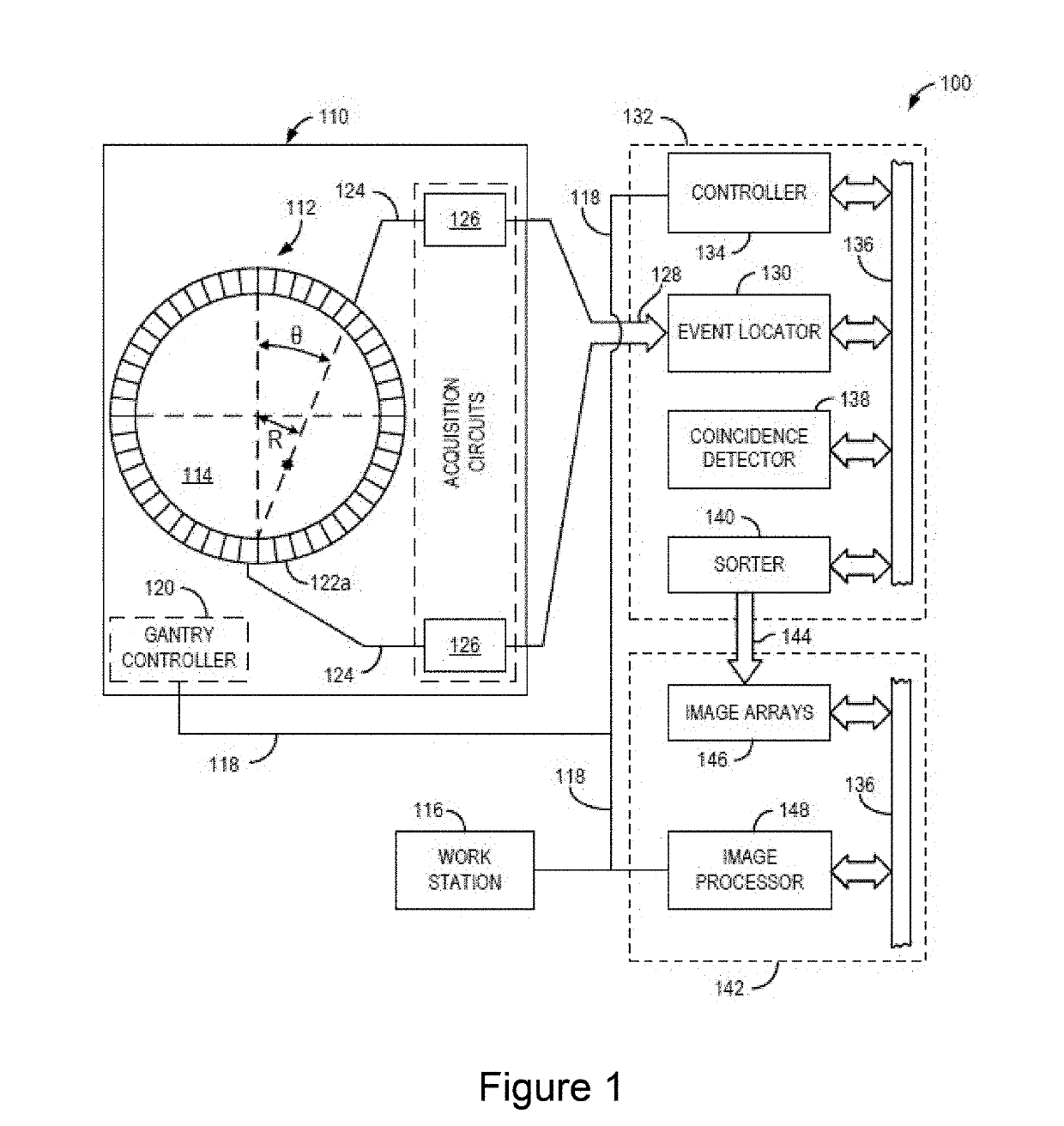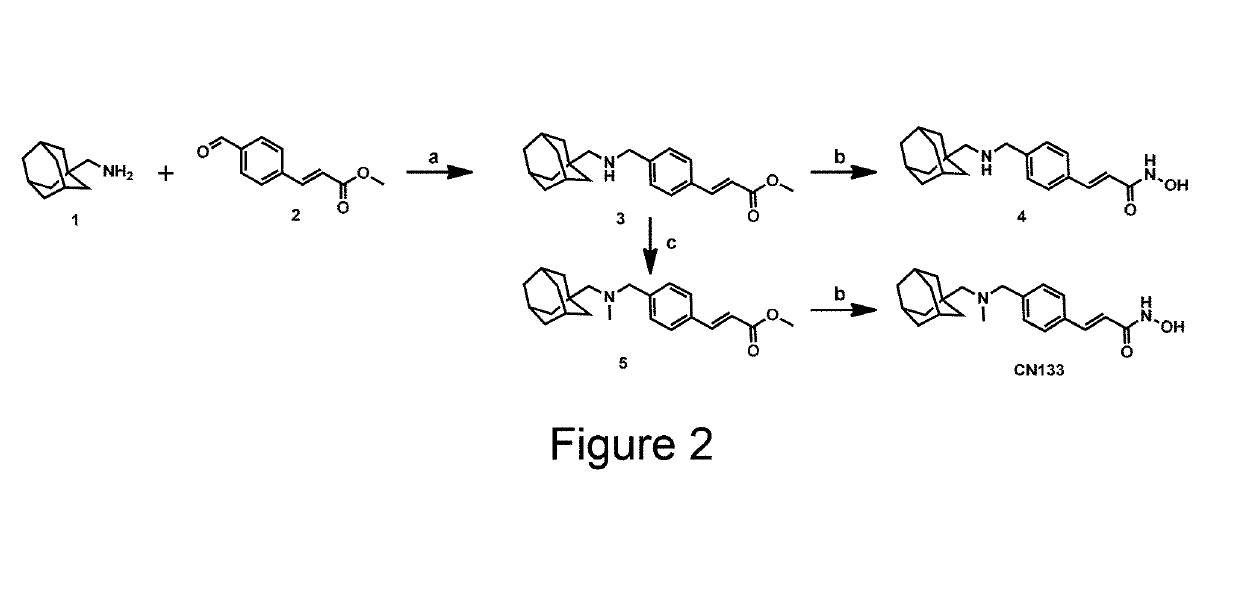Imaging histone deacetylases with a radiotracer using positron emission tomography
a radiotracer and histone deacetylase technology, applied in the field of histone deacetylase imaging agents for positron emission tomography, can solve the problems that slow-on compound would likely not be appropriate for in vivo imaging, and achieve the effects of accelerating the development of new histone deacetylase inhibitors, high brain uptake, and non-invasive and repetitive in vivo imaging
- Summary
- Abstract
- Description
- Claims
- Application Information
AI Technical Summary
Benefits of technology
Problems solved by technology
Method used
Image
Examples
examples
[0072]Development of histone deacetylase imaging agents for non-invasive PET imaging is important in elucidating the distribution and expression of histone deacetylase enzymes and their roles in diseases, including brain disorders, tumors and heart disease, also can be used for diagnosing such diseases in their early stage and accelerate the drug development. In this non-limiting example, we show that a hydroxamic acid-based small-molecule (E)-3-(4-((((3r,5r,7r)-adamantan-1-ylmethyl)(methyl)amino)methyl)phenyl)-N-hydroxyacrylamide (referred to as “CN133” herein) shows high binding to histone deacetylases. With the carbon-11 incorporation, [11C]CN133 exhibits high brain uptake and high specific binding in rodents and non-human primates, also shows blockade by pretreating with HDAC inhibitors in the peripheral organs. These results indicate that [11C]CN133 is a universal PET imaging probe for histone deacetylases, and it is contemplated that human evaluations will demonstrate that [11...
PUM
 Login to View More
Login to View More Abstract
Description
Claims
Application Information
 Login to View More
Login to View More - R&D
- Intellectual Property
- Life Sciences
- Materials
- Tech Scout
- Unparalleled Data Quality
- Higher Quality Content
- 60% Fewer Hallucinations
Browse by: Latest US Patents, China's latest patents, Technical Efficacy Thesaurus, Application Domain, Technology Topic, Popular Technical Reports.
© 2025 PatSnap. All rights reserved.Legal|Privacy policy|Modern Slavery Act Transparency Statement|Sitemap|About US| Contact US: help@patsnap.com



